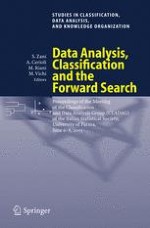This volume contains revised versions of selected papers presented at the biennial meeting of the Classification and Data Analysis Group (CLADAG) of the Italian Statistical Society, which was held in Parma, June 6-8, 2005. Sergio Zani chaired the Scientific Programme Committee and Andrea Cerioli chaired the Local Organizing Committee. The scientific programme of the conference included 127 papers, 42 in spe cialized sessions, 68 in contributed paper sessions and 17 in poster sessions. Moreover, it was possible to recruit five notable and internationally renowned invited speakers (including the 2004-2005 President of the International Fed eration of Classification Societies) for plenary talks on their current research work. Among the specialized sessions, two were organized by Wolfgang Gaul with five talks by members of the GfKl (German Classification Society), and one by Jacqueline J. Meulman (Dutch/Flemish Classification Society). Thus, the conference provided a large number of scientists and experts from home and abroad with an attractive forum for discussion and mutual exchange of knowledge. The topics of all plenary and specialized sessions were chosen to fit, in the broadest possible sense, the mission of CLADAG, the aim of which is "to further methodological, computational and applied research within the fields of Classification, Data Analysis and Multivariate Statistics". A peer-review refereeing process led to the selection of 46 extended papers, which are contained in this book.
